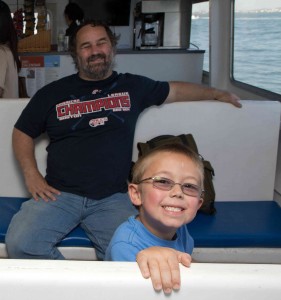Relying on Scientific Research on Memory and Identification, Court Says
Standard Set by U.S. Supreme Court 30 Years Ago Must Be Revised
(Trenton, NJ – August 24, 2011) — Today the New Jersey Supreme Court issued a landmark decision requiring major changes in the way courts are required to evaluate identification evidence at trial and how they should instruct juries. The new changes, designed to reduce the likelihood of wrongful convictions by taking into account more than 30 years of scientific research on eyewitness identification and memory, require courts to greatly expand the factors that courts and juries should consider in assessing the risk of misidentification.
To provide courts with these more enhanced jury instructions, the court gave the Criminal Practice Committee and the Committee on Model Criminal Jury Charges 90 days to submit proposed revisions to the current jury instructions on eyewitness identification, specifically directing them to consider the model jury instructions submitted by the Innocence Project.
The court’s decision stems from the 2004 conviction of Larry Henderson, a Camden man who received an 11-year prison sentence for reckless manslaughter and weapons possession related to a fatal shooting in January 2003. He appealed the photo lineup procedure because officers failed to follow the New Jersey Attorney General’s Guidelines, issued in 2001, for conducting identification procedures. The appeals court agreed and ordered a new hearing on the admissibility of the photographic identification of Henderson. Before that could occur, the state appealed, and the New Jersey Supreme Court decided that an extensive inquiry into witness identification procedures currently used by law enforcement was necessary.
The New Jersey Supreme Court appointed a Special Master to review the legal standard for the admissibility of eyewitness testimony known as the “Manson test,” established by the United States Supreme Court in 1977 and fully embraced by 48 out of 50 states, including New Jersey in 1988 in State v. Madison. In addition to the parties to the litigation, the court invited the Innocence Project and the Association of Criminal Defense Lawyers of New Jersey to participate in an inquiry by the Special Master who considered over 200 scientific studies and heard from some of the nation’s most respected experts on eyewitness identification before issuing findings to the court in June 2010.
The court remanded the Henderson case back to the trial court for further review in accordance with the decision. The decision will apply to all future cases, but will not be applied retroactively with the exception of the companion case, State v. Chen, in which the court held that suggestive identification procedures that resulted from private actors would also be subject to court scrutiny to ensure the reliability of the identification.
Read the NYT article about the decision here.
Eyewitness misidentification is the single greatest cause of wrongful convictions nationwide, playing a role in more than 75% of the 273 convictions overturned through DNA testing. Additional information about eyewitness misidentification is available here.





